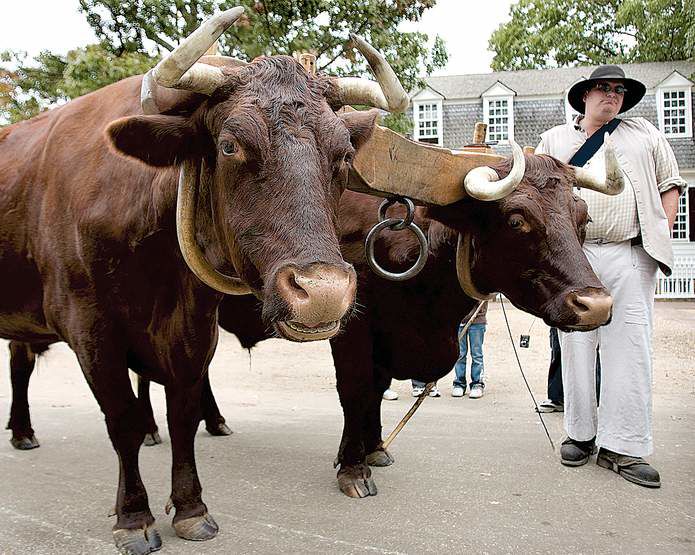Traveling back to the oxen era
Published 4:00 am Friday, November 7, 2008

- Oxman Darin Tschopp shows off Red and Rusty in Williamsburg, Va. Before horses and donkeys became fixtures in the mid-1800s, oxen provided the bulk of animal muscle power used in farming, logging, hauling, and canal and railroad building.
WILLIAMSBURG, Va. — Though their numbers might be small and their interests sharply focused, many of the visitors admiring the oxen in Colonial Williamsburg late last month were looking on with an unmistakable passion.
Unlike most folks today — who consider these huge draft animals to be no more than nostalgic emblems of a bygone era — this select group of breeders, teamsters and experts from around the world is studying them in much the same way as the people of the past.
And instead of picturesque relics, they see powerful tractors and reliable, hardworking trucks.
That singular point of view made the town’s historic area the center of the globe last week when it comes to the age-old history and practice of working with oxen.
Organized by the foundation’s pioneering rare breeds and livestock program, the three-day slate of lectures ranged from historical and contemporary overviews to practical veterinary issues and featured authorities from England, Scotland and Nova Scotia, as well as the United States.
Forgotten animal
It also included daily demonstrations of plowing, hauling and driving with some of the best oxen handlers in North America — all of which could be seen from the fence line surrounding the Historic Area’s Great Hopes plantation site.
“Where else do you go for something like this? The answer is ‘You don’t,’” says Richard Nicoll, head of Colonial Williamsburg’s rare breeds, and coach and livestock programs, who estimated about 75 participants were attending.
Funded by $12,000 in gifts from such donors as Ronald and Janet Fox, of Ohio, “Oxen in the Old and New Worlds” is the first symposium the foundation has devoted to an animal whose historical importance has been almost entirely forgotten.
Though horses and mules get most of the credit for building America, they didn’t become fixtures in the country’s agricultural and transportation sectors until after the mid-1800s, Nicoll says.
Before that time, the ox reigned supreme, providing the bulk of animal muscle power used in farming, logging, hauling, and canal and railroad building during the nation’s crucial early development in the 17th, 18th and early 19th centuries.
Most of the great migrations west in the late 1700s and 1800s depended on oxen power.
In the late 1850s, one company alone is said to have worked 40,000 oxen transporting Army supplies along the Missouri River.
“Ox drivers will tell you they can pull more and pull longer. They cost less to take care of and feed,” Nicoll says, describing powerful teams of as many as 32 animals.
“But oxen were the poor man’s animals. They were never written up like horses. So it’s a part of our history that has disappeared.”
Correcting that historical im- balance has been one of the foundation’s longtime goals since it introduced its first oxen in the 1950s and ’60s.
With the creation of the rare breeds program in 1987, the animal took on even more importance.
Today, Nicoll’s staff works four pairs of oxen in the Historic Area, including Durham Short Horns and the long-horned Devons.
At 2,000 pounds apiece, each animal offers visitors a rare and arresting sight, especially when they begin to plow or haul in teams according to voice commands — and the occasional prod — from the foundation’s drivers.
“People think that nobody knows how to do it anymore. But they’re wrong,” Nicoll says, citing not only his own staff but experts from Michigan, Maine, Nova Scotia and New Hampshire.
“You have to have a feel for it — and it takes a long time. But we’ve got a 4-H Club driver coming in from New England — Katy Huppe — who’s been doing it since she was knee-high, and now she’s one of the best in the country.”






